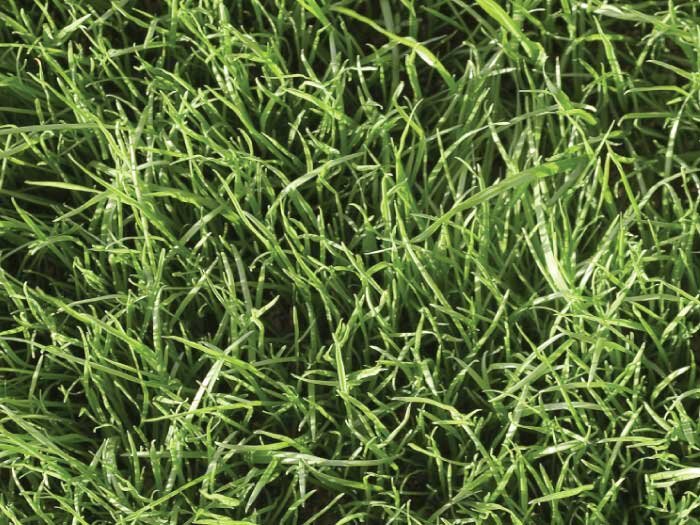Lawn care can sometimes be tricky. When our lawn isn’t looking right; not enough green, too many weeds, stunted growth, invading moss, etc. It can be hard to troubleshoot and remedy the problem. However, there are some simple steps that can help eliminate many of the most common problems found in Northwest lawns.
While most of the attention and praise around lawns is focused on what we see- the nice green turf gracing planned spaces around our homes- the effort that gets the best results focuses on what lies beneath the carpet of cool green growth.
WHERE DO NUTRIENTS GO?
In the Northwest, steady rainfall for much of the late fall and spring slowly but consistently move nutrients past plant roots at a rate faster than they can be consumed by growing plants and grasses. In wet months, it may seem that water is sitting on the surface, but it is always moving through or across the ground surface carrying with it minerals and nutrients that would otherwise be used by your lawn. The rate at which this occurs varies depending upon many factors including temperature, ground cover, slope, soil type, fertilization and even wind.
ACIDITY & pH
Nutrients (in the form of organic matter) moving through the soil as it decomposes naturally occurs over time and if new sources of organic matter aren’t added to the soil, it becomes “acidic”. That means the pH, or “Potential of Hydrogen” level (a measure of acidity or alkalinity) becomes lower, or “acidic” over time without reintroduced organic matter. Most living things depend on a proper pH level to sustain life- and our lawns are no different.
Adding nitrogen in the form of Ammonium based fertilizers to a lawn is the most common contributor to soil acidification, especially of the nitrogen is leached rather than taken up by plants. Many homeowners’ fertilizer with Ammonium based fertilizers because they are extremely effective at getting the results we want- a green, growing lawn. Unfortunately, many fertilize at rates and frequencies higher than that which is useful to the lawn. Combined with watering, fertilizing at higher rates than can be absorbed by plants results in a net increase of hydrogen ions in the soil contributing to pH imbalance or acidity.
BEST pH BALANCER- LIME
Most lawn grasses thrive in a balanced pH level of around 6.5 (slightly acidic). A simple soil test either done by a professional or with a kit you can buy at Wilco can determine where your soil pH lies. Be sure to test a variety of lawn areas (shade, sun, front, back, etc.). It is possible for pH ranges to be wide apart depending upon the soil conditions different parts of your yard. One of the best ways to counteract natural and artificial soil acidification is through the regular application of lime. Lime is calcium carbonate (limestone), and is commonly used in agriculture to raise pH levels to optimum crop growing levels. Nature’s Intent Granulated Limestone, or Calpril (Calpril Website), is limestone that is crushed to a very fine powder and then “prilled” or constituted into a spherical granule held together by a water-soluble binding agent. This product allows a homeowner to apply lime, just like farmers do, but without the dust and mess commonly associated with liming. Also, the calcium carbonate dust particles in the prilled product are even smaller than that in lime dust allowing it to take effect in soil at a much faster rate than lime dust (about 4 weeks). Calpril is great for adding calcium, raising soil pH, reducing excess aluminum, iron and manganese, improving efficiency of potassium and increasing available phosphorus and molybdenum in your soil, all beneficial elements to plant health in varying degrees depending on the plant.
WHEN AND HOW TO APPLY
Many experts recommend application to be done once in the spring (February or March) and once in the fall (late September or early November). Application is easy, and Calpril comes in handy 25lb or 50lb bags and can be spread using any kind of broadcast or drop spreader using the same rate you’d use for fertilizing your lawn (Calpril is approximately the same size granule as most lawn fertilizers). As an example, to raise pH in soil from 6.0 to 6.5 over 1,000 square feet requires 20lbs if the soil is sandy, 35lbs in loamy soil and 50lbs in clay.
If your soil is sandy, you’ll need less lime to affect the soil pH, and if your soil is a clay type, you’ll need more. Don’t worry- Calpril is non-burning so you can’t damage your lawn or soil by applying a little too much.
With a proper pH balanced soil, your lawn will be “happier” and healthier. It will be more efficient in getting and using the nutrients it needs to stay healthy, will be more effective at crowding out weeds, will develop stronger and deeper roots, and will require less fertilizing.
Orders
Services
About
Your Wilco Store
Store Hours
Monday to Saturday:
8 a.m. to 8 p.m.
Sunday: 9 a.m. to 6 p.m.
Need Help?
For questions or help with online orders call: (888) 78-WILCO
Limited to stock on hand. Some items may vary from photos. Because of store size limitations or geography, some items featured may not be available in all stores but will be made available by special order during sale periods at advertised prices. All sale prices listed as “dollars off” or “% off” are discounted from our regular posted shelf price, not from discounts given with specialty, bulk or pallet pricing. Reseller and Drop-shippers must contact us for pre-approval to place orders with the intent to re-distribute.
© 2025, Wilco Farm Store
